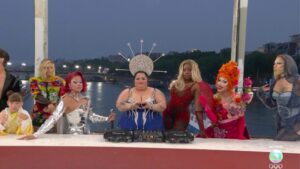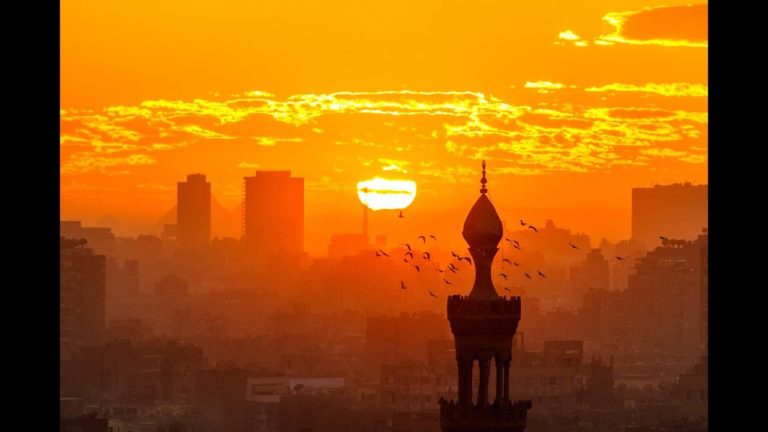
Listen to this article 2:36 min
1.A performance during the Paris Olympics’ opening ceremony on Friday has drawn criticism from church leaders and conservative politicians for a perceived likeness to Leonardo da Vinci’s depiction of a biblical scene in “The Last Supper,” with some calling it a “mockery” of Christianity.
2.The event’s planners and organizers have denied that the sequence was inspired by “The Last Supper,” or that it intended to mock or offend. In the performance broadcast during the ceremony, a woman wearing a silver, halo-like headdress stood at the center of a long table, with drag queens posing on either side of her.
3.Later, at the same table, a giant cloche lifted, revealing a man, nearly naked and painted blue, on a dinner plate surrounded by fruit. He broke into a song as, behind him, the drag queens danced.

4.The tableaux drew condemnation among people who saw the images as a parody of “The Last Supper,” the New Testament scene depicted in da Vinci’s painting by the same name.
5.The French Bishops’ Conference, which represents the country’s Catholic bishops, said in a statement that the opening ceremony included “scenes of mockery and derision of Christianity,” and an influential American Catholic, Bishop Robert Barron of Minnesota, called it a “gross mockery.”
6.The performance at the opening ceremony, which took place on and along the Seine on Friday, also prompted a Mississippi-based telecommunications provider, C Spire, to announce that it would pull its advertisements from Olympics broadcasts. Speaker Mike Johnson described the scene as “shocking and insulting to Christian people.”

7.The opening ceremony’s artistic director, Thomas Jolly, said at the Games’ daily news conference on Saturday that the event was not meant to “be subversive, or shock people, or mock people.” On Sunday, Anne Descamps, the Paris 2024 spokeswoman, said at the daily news conference, “If people have taken any offense, we are, of course, really, really sorry.”
8.Mr. Jolly said on Sunday that he had not been inspired by “The Last Supper.” “It is Dionysus who arrives at the table,” Mr. Jolly said in a television interview with the French media outlet BFMTV. Dionysus is the Greek god of festivities and wine, and is the father of Sequana, the goddess of the Seine River, he said. “The idea was instead to have a grand pagan festival connected to the gods of Olympus, Olympism,” he added.
9.For some, though, the resemblance to da Vinci’s painting was undeniable. “The idea of the central figure with a halo and a group of followers on either side — it’s so typical of ‘The Last Supper’ iconography that to read it in any other way might be a little foolhardy,” said Sasha Grishin, an art historian and professor emeritus at the Australian National University.





